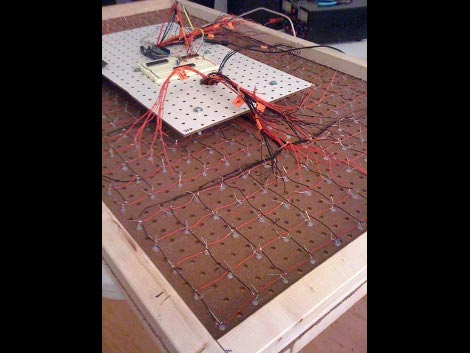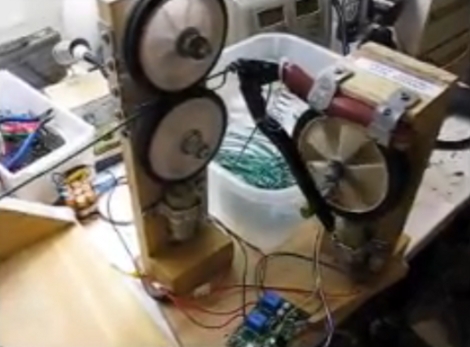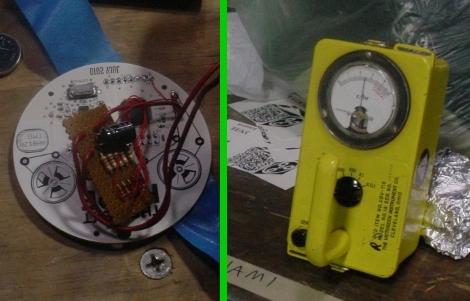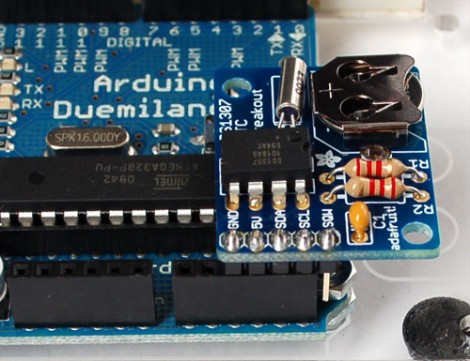
[Norm Santos] whipped up an LED light board that you can draw on through their web interface. We tried it out but unfortunately the live feed is currently offline. That doesn’t diminish our appreciation for the time-lapse build video after the break. Indeed it was a mountain of hot glueing and a couple of days of soldering. Our only beef is that for every LED on the board there are three empty peg holes. To us this is just begging to be augmented with blue, green, and white LEDs for a more spectacular result. What they have now encompases 350 LEDs managed by five microcontrollers, which took about two days to solder (for five people) and to hammer out some code. Continue reading “Web-enabled LED Pegboard”












